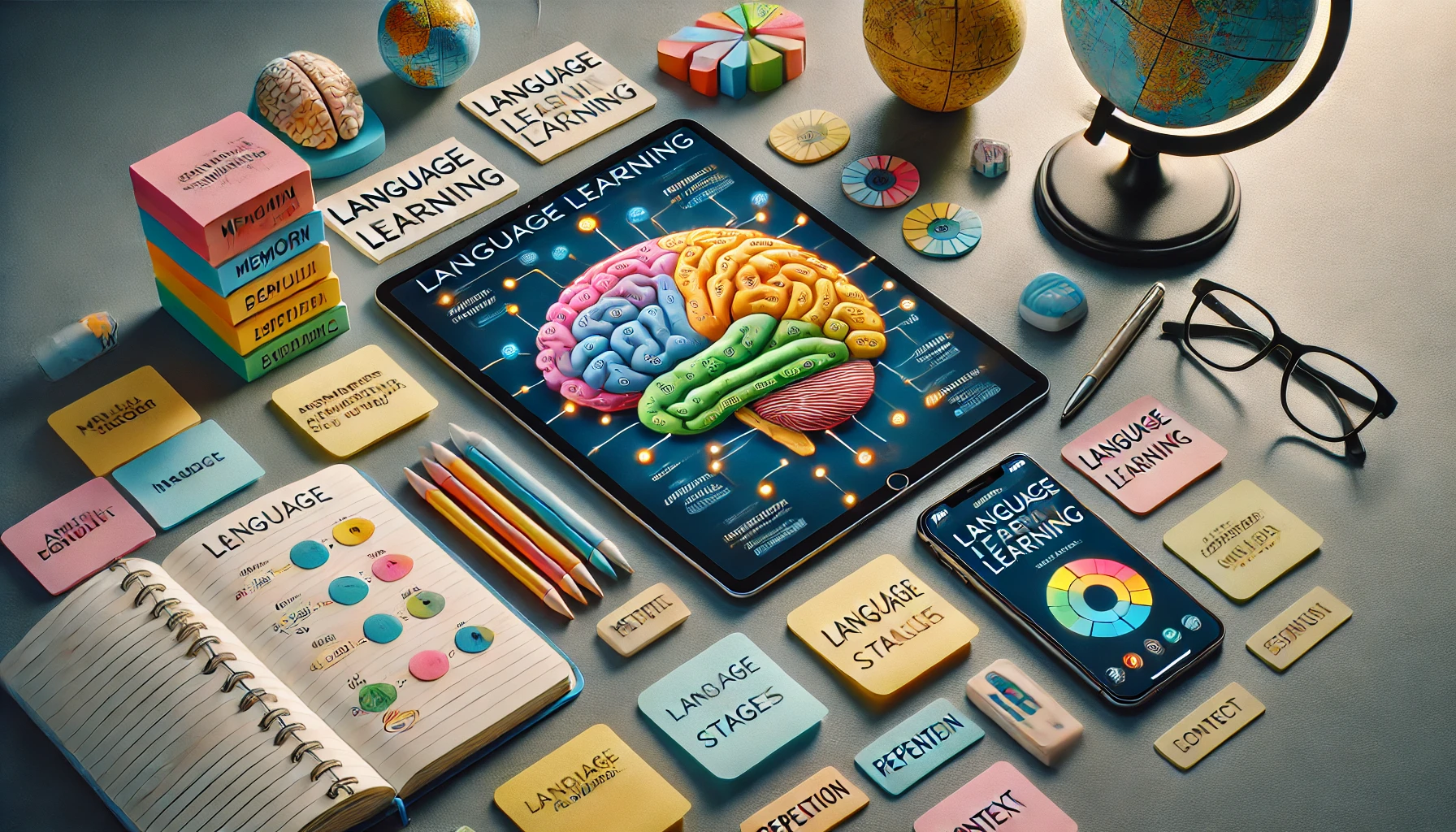Table of Contents
1. Introduction
Language acquisition is a fascinating and complex process that plays a vital role in human communication. Whether you’re learning a second language as an adult or acquiring your first language as a child, understanding the science behind language acquisition can make the process more effective and enjoyable. This article dives into the theories, processes, and strategies of language acquisition, offering practical insights to help learners at every level.
2. What Is Language Acquisition?
Language acquisition refers to the process by which humans learn to understand, produce, and use words to communicate. This process is fundamental to human development and can be divided into two categories:
- First Language Acquisition: The natural process by which infants and young children acquire their native language.
- Second Language Acquisition: The process of learning an additional language beyond one’s native tongue, typically as a child or adult.
Unlike other skills, language acquisition involves the interplay of cognitive, social, and biological factors. It is influenced by exposure, practice, and motivation, making it a unique learning experience for every individual.
3. Theories of Language Acquisition
Several theories attempt to explain how humans acquire language. Each provides valuable insights into the learning process:
Behaviorist Theory
Proposed by B.F. Skinner, the behaviorist theory emphasizes the role of reinforcement and imitation. According to this view, children learn language through repetition and positive reinforcement from their environment.
Innatist Theory
Noam Chomsky introduced the concept of a “language acquisition device” (LAD), a hypothetical mechanism in the brain that enables humans to acquire language naturally. This theory suggests that language learning is an innate ability.
Interactionist Theory
This theory combines elements of the behaviorist and innatist perspectives. It highlights the importance of social interaction and context in language learning, emphasizing the dynamic nature of communication.
4. How We Learn Languages
Language learning involves several key processes:
- Input: Exposure to the language through listening and reading is the foundation of language acquisition. The more input you receive, the more familiar you become with the language’s structure and vocabulary.
- Output: Speaking and writing are essential for reinforcing what you’ve learned and gaining confidence in communication.
- Feedback: Constructive feedback helps learners identify mistakes and improve their skills.
These processes are interconnected, and consistent practice in all areas is essential for mastery.
5. Challenges in Language Acquisition
Language acquisition is not without its difficulties. Common challenges include:
- Pronunciation: Learning the correct sounds and intonation can be challenging, especially in languages with unfamiliar phonemes.
- Grammar: Understanding and applying complex grammar rules often requires time and practice.
- Vocabulary Retention: Retaining new words and phrases can be difficult without regular use.
- Fear of Mistakes: Many learners struggle with anxiety about speaking or making errors in front of others.
6. Strategies to Enhance Language Learning
To improve your language acquisition journey, consider these strategies:
- Immerse Yourself: Surround yourself with the language through movies, music, and conversations.
- Practice Daily: Dedicate time each day to practicing listening, speaking, reading, and writing.
- Use Technology: Leverage apps, online courses, and language exchange platforms for structured learning.
- Find a Partner: Practice with a native speaker or fellow learner to improve your conversational skills.
7. Conclusion
The science of language acquisition provides valuable insights into how we learn and master new languages. By understanding the theories, processes, and challenges of language learning, you can develop effective strategies to enhance your skills. Remember, language acquisition is a journey, not a destination—embrace the process, stay consistent, and enjoy the rewards of communication and connection.




